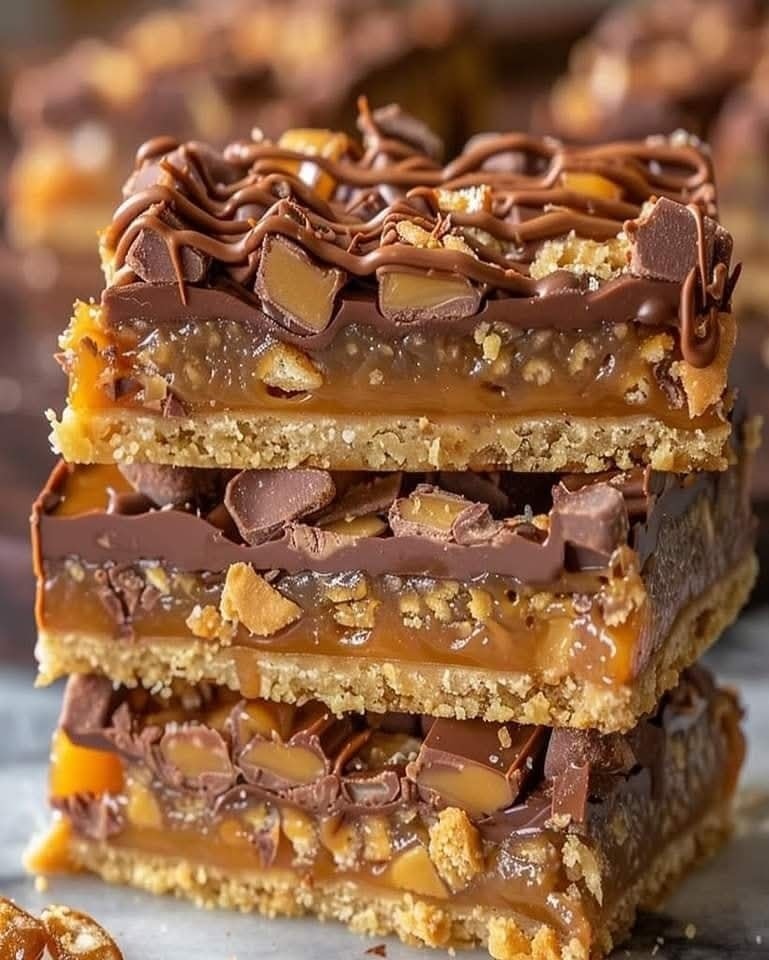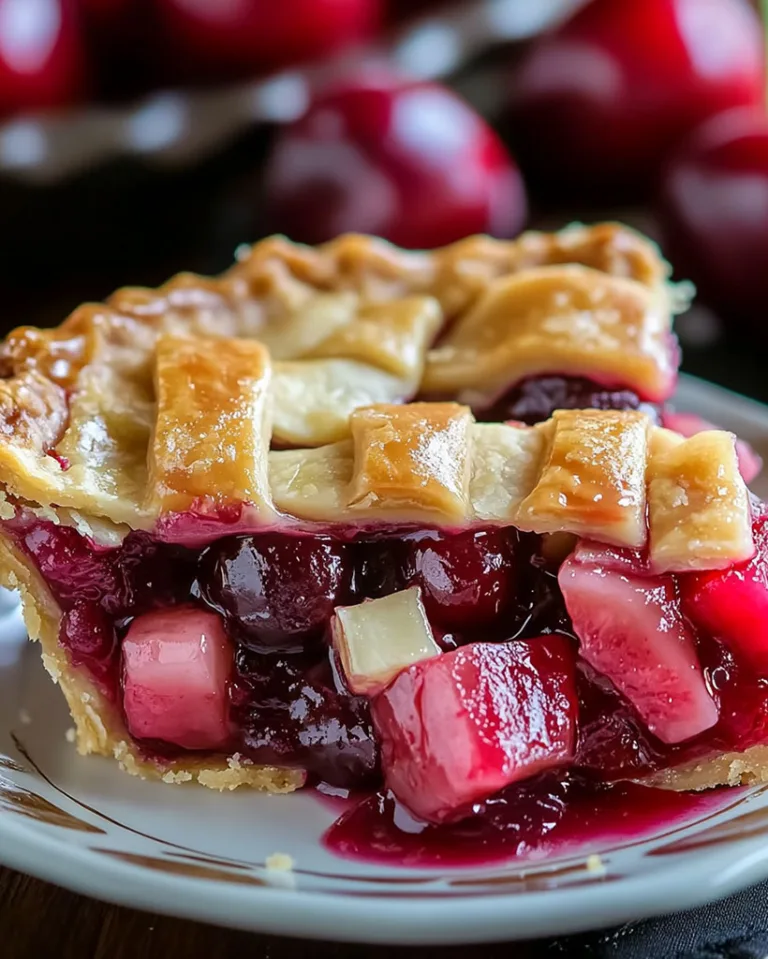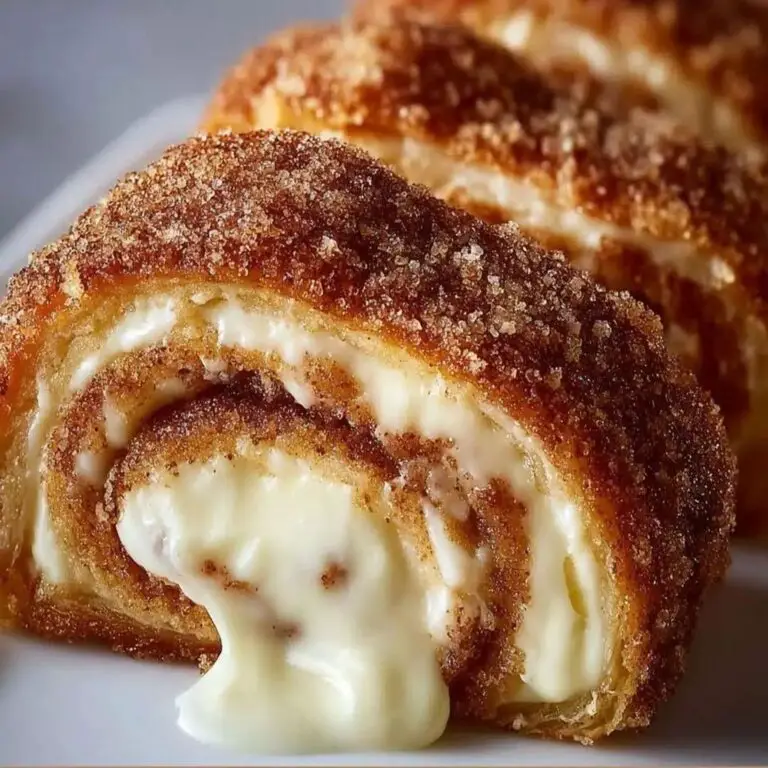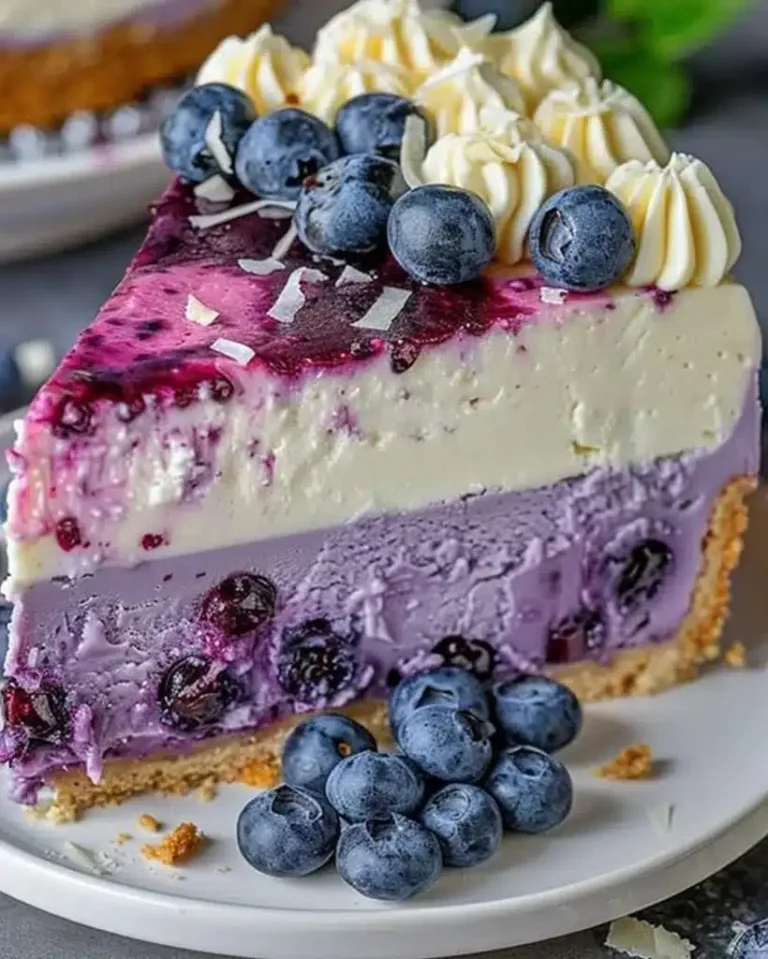Delicious Orange Creamsicle Cake Recipe for Summer Celebrations

Orange Creamsicle Cake: A Refreshing Dessert Delight
Indulge in the delightful freshness of an Orange Creamsicle Cake, a dessert that perfectly captures the essence of summer. This cake unites layers of fluffy orange-infused cake with a creamy, dreamy frosting that echoes the nostalgic flavors of your favorite citrus popsicle. Each bite offers a burst of bright citrus mingled with a sweet, creamy finish, making it the perfect treat for gatherings or cozy family dinners.
The beauty of this Orange Creamsicle Cake lies not only in its flavor but also in its vibrant presentation. The stunning orange hue of the cake, complemented by a cloud-like white frosting, makes it visually appealing for any occasion. Whether you’re celebrating a birthday, hosting a summer party, or just yearning for a sweet slice of nostalgia, this cake is bound to steal the show.
Quick Recipe Highlights
- Flavor Profile: The Orange Creamsicle Cake boasts a bright citrus flavor that is complemented by the sweet, rich cream cheese frosting.
- Texture: Expect a soft, moist cake paired with a silky smooth frosting that melts in your mouth.
- Aroma: The aroma of fresh oranges combined with vanilla creates an inviting and uplifting scent, reminiscent of warm summer days.
- Visual Appeal: The cake’s bright orange color and fluffy white frosting make for a stunning centerpiece that is sure to impress.
- Skill Level Needed: This recipe is of medium difficulty, requiring some familiarity with basic baking techniques.
- Special Equipment: All you need are standard baking tools, including cake pans, a mixing bowl, and an electric mixer for the frosting.
Recipe Overview
- Difficulty Level: The Orange Creamsicle Cake is classified as medium difficulty due to the multiple layers and requirement for frosting finesse.
- Category: This is a dessert recipe, perfect for sweet cravings or special occasions.
- Cuisine: Drawing on American baking traditions, this cake reflects the playful, summer-inspired flavors loved across the U.S.
- Cost: The approximate cost of ingredients is reasonable, making it accessible for anyone looking to bake a special treat.
- Season: Ideal for summertime and spring, when fresh oranges are at their best; perfect for warm-weather gatherings.
- Occasion: Perfect for birthday parties, family reunions, and festive events, it’s a crowd-pleaser that adds a touch of joy to any gathering.
Why You’ll Love This Recipe
This Orange Creamsicle Cake is not just a treat for the palate but a feast for the senses. The harmonious blend of fresh orange zest and creamy frosting delivers a flavor profile that is both sweet and tangy, reminiscent of the classic creamsicle ice cream. Each slice reveals layers that are reminiscent of carefree summer days, making it a delightful dessert for any occasion. The moist texture of the cake paired with the rich, fluffy frosting creates an indulgent experience that is both refreshing and satisfying.
Convenience is another reason to adore this recipe. With straightforward steps, even novice bakers can achieve the fluffy texture and creamy finish. Preparing the cake in advance allows flavors to meld beautifully, ensuring a tastier result. Plus, the cake stores well, allowing you to impress your guests without the last-minute rush. The ease of preparing this delightful dessert combined with its impressive results makes it a go-to recipe in your dessert repertoire.
Nutritionally, the Orange Creamsicle Cake features fresh ingredients, and it also has the brilliance of vitamin C content from the oranges. While it should be enjoyed in moderation as a sweet treat, the fresh fruit element gives it a slight nutritional edge over other traditional desserts. The simplicity of the ingredients also means it is easy to adapt, allowing you to incorporate healthier alternatives if desired.
When it comes to social and entertaining aspects, this cake is a showstopper. Guests will marvel at its stunning appearance and the delightful aroma that fills your kitchen while baking. The joy of baking this cake offers an opportunity to connect with family and friends—whether you gather everyone to frost together or simply share stories while it bakes. It’s a perfect conversation starter and a memorable addition to any dessert table.
Cost-effectiveness is yet another highlight; most of the ingredients are staples that can be found in most kitchens. The recipe yields a dozen servings, making it economical for sharing at events or gatherings. It’s an affordable luxury that brings smiles without breaking the bank.
Historical Background and Cultural Significance
The origins of the creamsicle dessert can be traced back to the early 20th century when ice cream became a phenomenon in America. As popsicles gained popularity, someone had the brilliant idea to combine them with a creamy, orange-flavored filling. Fast forward to present day, and this concept has evolved into various desserts, including the beloved cakes like our Orange Creamsicle Cake.
Culturally, the flavors of orange and cream evoke feelings of nostalgia for many, reminiscent of childhood summers spent enjoying cold treats. This cake not only celebrates the classic combination but also brings families and friends together, serving as a centerpiece at picnics, birthday parties, and festive gatherings.
Through the years, the evolution of this recipe has seen numerous adaptations, from incorporating different citrus fruits to chocolate variants. Each iteration adds a unique twist, showing the versatility of the flavors while maintaining a core connection to the original creamsicle flavor.
Regional variations have emerged, as different areas of the U.S. incorporate local fruits or cream styles. From using tangy grapefruit to the addition of whipped cream textures, each variation provides a personal touch that honors the classic dessert.
Ingredient Deep Dive
– Oranges: The hero of this cake, oranges provide the refreshing citrus flavor that is essential to the creamsicle experience. Oranges are rich in vitamin C, making them not just delicious but nutritious too. When selecting oranges, look for firm, heavy fruit with vibrant skin. Store in a cool, dry place and use within a week for peak flavor. If oranges are unavailable, substitutions with lemon zest or another citrus fruit can work beautifully.
– Flour: All-purpose flour serves as the backbone of the cake, providing structure. Whole wheat options can introduce extra nutrients and a denser texture. When selecting flour, choose a finely milled flour for the softest results. Store flour in an airtight container in a cool, dry area to maintain freshness. Gluten-free substitutes like almond flour can be used for those avoiding gluten.
– Cream Cheese: This ingredient gives the frosting its creamy consistency and tangy flavor. When integrating cream cheese, allow it to soften at room temperature for easy mixing. Store in the refrigerator and consume within a few days of opening. For a lighter version, Greek yogurt can be substituted to maintain a similar texture.
Common Mistakes to Avoid
- Overmixing the batter can lead to a dense cake instead of a light and airy one. Aim to mix just until combined.
- Not measuring ingredients accurately can throw off your cake’s texture. Use a kitchen scale or measuring cups for precision.
- Skipping the cooling time before frosting can cause the icing to melt. Always ensure the cake is completely cool.
- Using cold ingredients instead of room temperature ones can affect the mixing and texture of your batter. Allow ingredients like eggs and cream cheese to come to room temperature.
- Not sifting the flour can lead to clumps that affect the cake’s rise. A fine sift helps aerate the flour for a better texture.
- Frosting too soon can create a melty mess. Wait at least 30 minutes after removing from the oven before starting to frost.
- Using the wrong size pans can lead to uneven baking. Always use the specified cake pan size for best results.
- Neglecting to grease and flour the pans can lead to sticking, making it challenging to remove the cake.
- Over-baking can dried the layers. Keep an eye on the cake and do the toothpick test to check for doneness.
- Not adjusting baking times for altitude changes can lead to poor results. Research adjustments based on your elevation.
Essential Techniques
1. Creaming Butter and Sugar: This technique is vital for creating a light and fluffy cake. Start with softened butter and gradually add sugar while mixing until the mixture is pale and airy. Avoid overmixing, as this can deflate the air you’ve incorporated.
2. Folding: This method is crucial when incorporating dry ingredients into your wet mixture without losing air. Use a spatula to gently lift and fold the mixture over itself until just combined, avoiding vigorous stirring.
3. Decorating with Frosting: This is an art! When frosting, start with a crumb coat to lock in crumbs, then apply the final coat smoothly. A spatula or a cake scraper can help achieve a polished finish.
4. Checking for Doneness: Knowing when your cake is perfectly baked is key. Insert a toothpick into the center; if it comes out clean or with a few crumbs, it’s done. Overbaking can lead to a dry cake.
5. Cooling: Letting your cake cool in the pan for 10-15 minutes before transferring to a wire rack helps it maintain its shape without falling apart. This step is vital for texture.
Pro Tips for Perfect Orange Creamsicle Cake
1. Use fresh orange juice and zest for the most vibrant flavor. Avoid bottled juice for an authentic taste.
2. Allow all ingredients to reach room temperature before mixing to ensure even incorporation.
3. For a zested element, consider adding orange extract to enhance the citrus profile.
4. Experiment with adding mini chocolate chips for a delightful contrast to the citrus flavor.
5. Ensure your bowls and utensils are clean and dry before using cream cheese to achieve the best frosting consistency.
6. If your frosting is too runny, refrigerate it briefly to thicken up before applying.
7. Create a layered look by slicing the cake horizontally and adding filling layers of frosting and zest.
8. Decorate the top with orange wedges or sprinkles for a festive touch.
Variations and Adaptations
– Regional Variations: In different locales, you might find orange cakes made with local citrus fruits, such as tangerines or clementines. These alternatives can introduce unique flavors while still celebrating the essence of an orange creamsicle.
– Seasonal Adaptations: During the fall, consider incorporating pumpkin puree into the cake batter for a pumpkin-orange fusion that’s delightful for autumn gatherings.
– Dietary Modifications: For a gluten-free option, swap out the all-purpose flour with a gluten-free blend, ensuring you also use a gluten-free baking powder.
– Flavor Variations: Explore mixing in elements like coconut extract or lemon zest for a tropical twist or a tangy touch.
– Texture Modifications: If you prefer a denser cake, try substituting half the flour with almond flour for a nutty flavor and moist texture.
– Presentation Alternatives: Serve in individual cups or jars for a trendy dessert display that’s perfect for parties or picnics.
Serving and Presentation Guide
Elevate the visual appeal of your Orange Creamsicle Cake by focusing on plating techniques. Use a large platter to showcase the cake, and consider creating height by stacking the layers diagonally. Garnish with edible flowers, citrus slices, or a sprinkle of zest for a sophisticated finish.
In terms of traditional accompaniments, whipped cream or a scoop of vanilla ice cream pairs beautifully with the citrus cake, enhancing the flavors while adding a creaminess. For modern serving suggestions, consider pairing the cake with chamomile tea or a citrus-infused iced tea to highlight the orange notes further.
Temperature considerations are also vital; serving at room temperature allows the flavors to shine. When presenting, aim for elegant portions. A standard slice cut at an angle not only looks appealing but is also easier to serve.
Wine and Beverage Pairing
When it comes to pairing beverages with your Orange Creamsicle Cake, a light, sparkling wine such as Prosecco complements the cake’s citrus flavors wonderfully. The bubbles add a refreshing note, making it perfect for celebrations. For those looking for non-alcoholic alternatives, consider serving the cake with a homemade citrus soda or a refreshing iced herbal tea that enhances the orange zest.
Coffee enthusiasts may enjoy a mild, creamy coffee alongside the dessert. A latte or cappuccino with a hint of vanilla echoes the flavors in the frosting, enhancing the overall tasting experience. Remember to serve beverages chilled or at room temperature, allowing the cake to shine as the main attraction.
Storage and Shelf Life
Store your Orange Creamsicle Cake in an airtight container in the refrigerator to maintain freshness. The cake can last for up to 4-5 days if stored properly. To ensure the best taste, consume within this timeframe; any longer might result in dry cake.
If you need to freeze the cake, it is best to do so before frosting. Wrap the cake layers individually in plastic wrap, then place them in a freezer-safe container. When properly stored, your cake can remain frozen for up to 3 months. To thaw, simply move the layers to the fridge a day before serving.
Signs of spoilage include an unpleasant odor or a dry, crumbly texture. If this occurs, it’s best to discard the cake. For reheating, a brief microwave zap (10-15 seconds) can refresh your dessert, bringing it back to its tasty glory while keeping the frosting intact.
Make Ahead Strategies
To ease the baking process, consider making your Orange Creamsicle Cake ahead of time. Bake and cool the layers a day in advance, which allows for better flavor development. Wrap each layer tightly in plastic wrap to lock in moisture and store the layers in the refrigerator until it’s time to frost.
For best results, frost the cake on the day of serving to prevent the layers from becoming soggy. If making the frosting ahead, store it in an airtight container in the refrigerator. When ready to use, gently re-whip to restore its creamy consistency before spreading on the cake.
Do assess potential quality impacts; baking in advance might result in slight texture changes, but the convenience often outweighs these minor variations. Consider adding fresh zest or fruits just before serving for that garden-fresh element.
Scaling Instructions
Scaling your Orange Creamsicle Cake recipe is straightforward. If you need to halve the recipe, simply adjust your ingredient quantities accordingly and halve the baking time, checking for doneness regularly.
Conversely, if you wish to double or triple the recipe, ensure that your mixing bowl is large enough to accommodate all the ingredients. You may need to adjust baking times slightly due to increased volume. Monitor the cakes closely until ready, as larger batches can take a bit longer to bake through.
When scaling, remember to also adjust your frosting proportions to match the size of your cake. You can store any leftover frosting in the fridge for later use. Additionally, consider your baking pans’ size, as this may affect the cooking time and outcome.
Nutritional Deep Dive
Breaking down the macros in your Orange Creamsicle Cake can offer insight into its health benefits. The cake’s base ingredients typically yield a balanced mix of carbohydrates, fats, and proteins. A standard serving will provide you with an energy boost while still being satisfying.
From a micronutrient perspective, the inclusion of oranges brings vitamin C and potassium to the dish; these nutrients support immune function and heart health. The cream cheese in the frosting adds some calcium, essential for bone health.
When considering health benefits, moderation is key. Balancing the indulgent flavors of the cake with a healthy meal earlier in the day allows you to enjoy this dessert as a delightful treat without guilt. Portion analysis is essential; aiming for a generous slice rather than a whole cake can keep it a fun, occasional dessert rather than an everyday indulgence.
For those tracking their weight, enjoying smaller portions or opting for a lighter version of the frosting can help maintain a well-rounded diet while still relishing this sweet treat.
Dietary Adaptations
Creating a gluten-free version of your Orange Creamsicle Cake is easy. Substitute the all-purpose flour with a gluten-free blend designed for baking. Check your baking powder to ensure it’s gluten-free as well.
For a dairy-free adaptation, replace cream cheese with a softened dairy-free cream cheese alternative and use coconut milk or almond milk in the cake. You can also opt for a vegan version by substituting eggs with flaxseed meal or applesauce and using dairy-free butter in the frosting.
If you are following a low-fat diet, consider using a low-fat yogurt in place of cream cheese for a lighter frosting. For a keto twist, almond flour can replace traditional flour, and you can sweeten the cake with a keto-friendly sweetener to cut down on carbs.
Incorporating these dietary modifications keeps the fun of the Orange Creamsicle Cake alive while catering to various dietary needs.
Troubleshooting Guide
If your Orange Creamsicle Cake turns out denser than expected, chances are you overmixed the batter. To remedy this in the future, mix just until incorporated, and avoid vigorous stirring.
If the flavor seems off, ensure you’ve used fresh ingredients. A stale orange gives an unpleasant taste; fresh zest and juice make a significant difference. If the cake is too sweet, balance it out by serving with extra citrus on the side.
Overcooked cakes dry out quickly. When testing for doneness, insert a toothpick; if it comes out with a few moist crumbs, it’s perfect. For equipment challenges like a jiggling cake, ensure your oven maintains the correct temperature.
Ingredient substitutions, like replacing cream cheese with other alternatives, can yield varied results. Track your ingredients to understand how to balance flavors and textures accordingly.
Timing concerns come into play when preparing multiple dishes. Prioritize baking and allow the cake to cool while you prepare the frosting to save time.
Recipe Success Stories
Community feedback on the Orange Creamsicle Cake has shown it’s a favorite for gatherings. Many have shared stories about how this cake has become a staple at birthdays and summer barbecues, often leading to requests for the recipe.
Successes with variations, such as adding fresh berries or flavored extracts, prove that while the original recipe is stellar, it’s also versatile. Users have reported creating stunning layers that add to the celebration of flavor without losing the charm of the traditional cake.
Adaptation stories frequently highlight the ease with which those following dietary restrictions can enjoy this classic treat. Users have expressed joy over transforming the recipe to fit gluten-free or vegan needs while still keeping the familiar flavor intact.
Photography tips shared in various forums encourage using natural light and colorful backgrounds to truly capture the vibrancy of the cake. These tips help others recreate and share their success, adding to the cake’s community love.
Frequently Asked Questions
A: Yes, you can bake and cool the cake layers in advance. Store them wrapped in plastic wrap in the fridge until you’re ready to frost and serve.
Q2: What’s the best way to store leftovers?
A: Store any leftover Orange Creamsicle Cake in an airtight container in the fridge, where it will stay fresh for about 4-5 days.
Q3: Can I use bottled orange juice instead of fresh?
A: While you can use bottled juice, fresh orange juice and zest will provide a much brighter and more authentic flavor to the cake.
Q4: What can I substitute for cream cheese in the frosting?
A: Dairy-free cream cheese alternatives or whipped coconut cream can be used for a lighter, vegan-friendly frosting.
Q5: How do I prevent the cake from sticking to the pan?
A: Always grease and flour your cake pans thoroughly to prevent sticking and ensure an easy release.
Q6: Can I freeze the Orange Creamsicle Cake?
A: Absolutely! To freeze, wrap the individual layers in plastic and store in a freezer-safe container. They can last up to 3 months frozen.
Q7: Is this cake suitable for children?
A: Yes! The light, sweet flavor is usually adored by kids. It makes a fun dessert for birthday parties and gatherings.
Q8: What if my cake dome in the center?
A: This can happen if your oven temperature is too high. Make sure to monitor your oven temperature and use an oven thermometer for accuracy.
Q9: Should I add food coloring for a richer color?
A: Adding food coloring is not necessary, but if you want a deeper orange, you can use a few drops of gel food coloring to enhance the hue.
Q10: What size cake pans should I use?
A: For best results, use 9-inch round cake pans as specified in the recipe; this will ensure even baking and proper height.
Q11: Can I add other flavors to the cake?
A: Yes, feel free to get creative! Incorporating lemon or lime zest can introduce a refreshing twist on the classic flavor.
Additional Resources
If you’re looking to deepen your baking skills, consider exploring related recipes such as lemon drizzle, vanilla buttercream, and other citrus-inspired desserts. Understanding ingredient information is also helpful; dive into the world of citrus fruits to learn about seasonal availability and selection tips.
For technique guides, exploring frosting techniques and decorating tips can enhance the visual presentation of your Orange Creamsicle Cake. Using quality utensils and equipment can also elevate your baking experience and results.
Keep an eye on seasonal variations of fruits, as experimenting with other fruits in this cake can lead to delightful surprises. Consider mixing and matching flavors to find the perfect combinations that resonate with your taste.
Join the Conversation
Engagement with fellow bakers can add richness to your recipe experience. Share your Orange Creamsicle Cake photos on social media to inspire others and encourage them to try the recipe. Recipe reviews provide valuable feedback, creating a community around shared experiences and improvements in the recipe.
Consider encouraging discussions about variations and personal adaptations; sharing what worked (or didn’t) leads to enhanced creativity in the kitchen. Connecting with others through comments or messages fosters a sense of belonging in the culinary world.
The Recipe
Orange Creamsicle Cake
Serves: 12
Prep Time: 30 mins
Cook Time: 25 mins
Total Time: 55 mins
Kitchen Equipment Needed
- 2 round cake pans (9-inch)
- Mixing bowl
- Electric mixer
- Spatula
- Wire cooling rack
Ingredients
- 2 cups all-purpose flour
- 1 ½ cups granulated sugar
- ½ cup unsalted butter, softened
- 1 cup fresh orange juice
- 3 large eggs
- 2 tsp baking powder
- 1 tsp baking soda
- 1 tsp vanilla extract
- 1 tsp orange zest
- ½ tsp salt
Directions
- Preheat your oven to 350°F (175°C) and grease the cake pans.
- In a mixing bowl, cream together butter and sugar until light and fluffy.
- Add eggs one at a time, mixing well after each addition.
- Stir in orange juice, vanilla extract, orange zest, and mix until combined.
- In another bowl, whisk together flour, baking powder, baking soda, and salt.
- Gradually add the dry ingredients to the wet mixture, mixing until just combined.
- Divide the batter evenly between the prepared pans and smooth the tops.
- Bake for 25-30 minutes, or until a toothpick inserted in the center comes out clean.
- Let the cakes cool in the pans for 10-15 minutes before transferring to a wire rack to cool completely.
- Frost with cream cheese frosting once completely cooled.
Recipe Notes
- For an extra orange flavor, feel free to add more zest!
- This cake can be made a day in advance; just frost it on the day of serving.
- Store any leftovers properly in an airtight container in the fridge.






